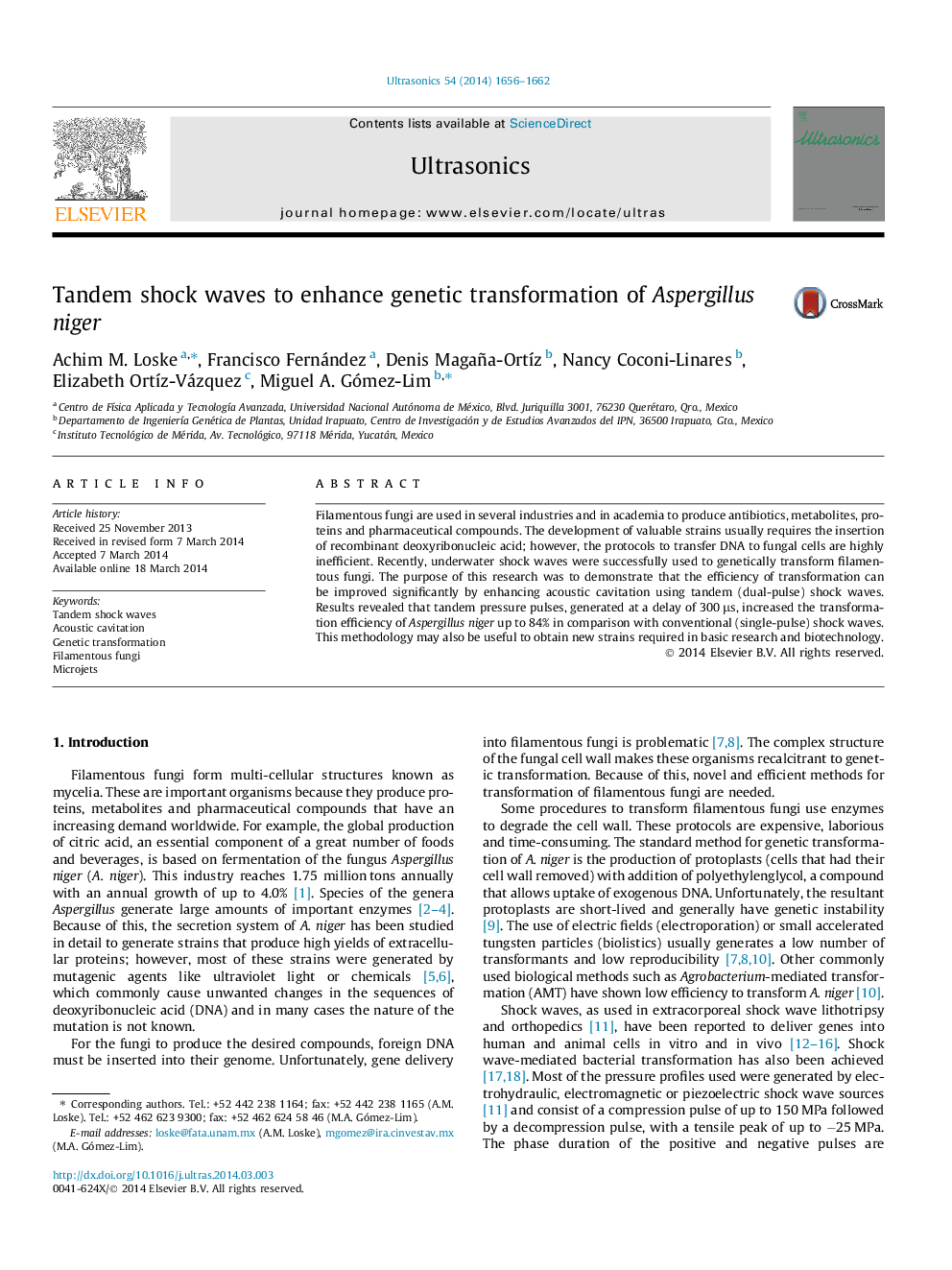| Article ID | Journal | Published Year | Pages | File Type |
|---|---|---|---|---|
| 1758853 | Ultrasonics | 2014 | 7 Pages |
•Better methods to genetically transform fungi are needed in industry and academia.•We demonstrate that acoustic cavitation is responsible for transformation of fungi.•Tandem shock waves produced 84% more transformants than single-pulse shock waves.•Tandem shock waves are a simple and efficient method to transform Aspergillus niger.
Filamentous fungi are used in several industries and in academia to produce antibiotics, metabolites, proteins and pharmaceutical compounds. The development of valuable strains usually requires the insertion of recombinant deoxyribonucleic acid; however, the protocols to transfer DNA to fungal cells are highly inefficient. Recently, underwater shock waves were successfully used to genetically transform filamentous fungi. The purpose of this research was to demonstrate that the efficiency of transformation can be improved significantly by enhancing acoustic cavitation using tandem (dual-pulse) shock waves. Results revealed that tandem pressure pulses, generated at a delay of 300 μs, increased the transformation efficiency of Aspergillus niger up to 84% in comparison with conventional (single-pulse) shock waves. This methodology may also be useful to obtain new strains required in basic research and biotechnology.
